China's Avatar Mountains through Western Eyes
2016-12-20 17:59:02
By TOM WATKINS
For Journal Register Newspapers
I am back from my most recent trip to China.
For the more than two decades I have been traveling here, I am unable to absorb all the grandeur, natural beauty and goodwill of the local people in a single visit. I last visited in the fall of 2009, and like a force of gravity, I was pulled back to Zhangjiajie in China’s Northwest Hunan Province.
Travel with me as I introduce you to Hunan Province in China and the special, indigenous people of Zhangjiajie and its magnificent surrounding area, a UNESCO World Heritage Site, “deserving of protection for the benefit of all mankind” as determined by the UN over 18 years ago.
Zhangjiajie City in western Hunan Province is part of Wulingyuan. Designated as one among 40 of China’s UNESCO World Heritage Sites, it is a place that speaks to the splendor of China. People the world over flock to the Wulingyuan National Park via Zhangjiajie for a glimpse of 3,100 tall quartzite sandstone pillar-like mountains.
If you have seen the blockbuster movie, “Avatar,” you have seen Zhangjiajie. More on this in a moment.
I returned expecting to see new sights while experiencing the local richness and spice of Hunan food, and drinking in the natural wonders of what a 2007 New York Times Travel article described as “one of the most remarkable geo-morphological spectacles existing on our planet” (New York Times, July 15, 2007). At times, I felt like a person in the pages of National Geographic magazine, laughing until my cheeks hurt, as I again tried my less-than-basic Chinese on the local residents who humored and assisted me like a long-lost family member. I was not disappointed.
Zhangjiajie is booming in popularity for Chinese and international tourists alike. It is endowed with unique natural scenery that has evolved, like China itself, over the centuries, along with the colorful and unique folk customs of the three major Chinese minority groups in the region. The Tujia, Bai and Miao people are ethnically and culturally distinct from China’s Han majority, together making up approximately 70 percent of the local population. Their inner beauty shines through.
What characteristics identify these 55 distinct minority people in China, different from the Han who comprise 92 percent of China’s vast population of 1.3 billion?
China’s minority groups maintain their own rich traditions with:
Distinct customs — Ranging from dress to food, religion, and marriage rituals; Distinct language — Written and spoken that go beyond simply different dialects; Distinctly-recognized areas which minorities have historically occupied; and A strong sense of self that goes back generations to include both “friends” and enemies.Here are the Three Main Minority Groups In Zhangjiajie:
1) Bai — Approximately 1.8 million people. While most Bai live in the Dali Bai Autonomous Prefecture in Yunnan Province, there are a sprinkling of Bai in Hunan. Their predominant religion is Buddhism. Favorite color for clothing and decorations? White. In Mandarin, Bai means “white.”
2) Tujia — There are approximately 8 million Tujia people, the sixth largest minority group in China. Tujia trace their origins and history back 12 centuries. They are renowned for their singing and dancing traditions. I love the joy and the piercing sound of exhilaration at the end of a Tujia song that ends with a sweet and loud, “Ooooooweee!”
3) Miao— Approximately 7.3 million Miao people. The Miao are related to the Hmong of Southeast Asia and live in a mountainous region where they depend on farming and raising animals. More recently, tourism has become a means of earning a living in this region for the Miao. The female headdress is very distinct and special in the Miao culture. Parents begin saving at birth to make the ornate silver ornament.
Zhangjiajie cuisine
There are not enough days in one’s life to sample the variety of delicacies found in China. The food in Zhangjiajie is characterized by Xiang cuisines, one of China’s famed eight cuisines. Most in the West have heard of Hunan’s spicy food. Zhangjiajie, being in Hunan Province, will certainly spice up your life with a colorful variety of dishes to be found in this corner of China. You will enjoy tantalizing spicy, sour and salty dishes — unlike anything you’ve tasted at your local western Chinese restaurant. Be adventurous.
Sample sautéed preserved pork, a Tujian dish (boiled radish, bean curd, cabbage, shallot, pork and the hot, hot, HOT spicy chili), Tujia hot pot, fried bee eggs, dried tofu slices, donkey, bull frog with spicy peppers ciba, or glutinous rice pie, rice balls, giant salamander, fir fungus, blooded tofu (pig blood and bean curd), and sour fish. Wash it all down with a bowl of gastraodia tuber and black-boned chicken soup with chicken feet.
You don’t want to miss “three foods in a pot,” consisting of intestinal parts from cows, sheep and pigs along with bean curd and radish or fish head soup or a fish head stuffed with red pepper, pimento, peanuts and tomato.
Not starving? Try a local snack. Chinese gooseberry and juhuaxin. Jixiang grapefruit are refreshing and healthy. Perhaps a bit less healthy but still tasty is a traditional Miao delicacy, the she meal, made with preserved ham, a wild vegetable call hao and sticky rice fried in lard.
If it grows, swims, crawls or moves, it is eaten in China! To the typical Western palate, hot spicy and exotic, but you’ll be surprised that the food in this region is quite tasty.
Oh what a feeling!
I feel like a little boy in a candy store when I enter China — my senses pop when I arrive. The sensation is magnified, like enjoying the ma spice sensation, and tingling all over as I travel to that slice of heaven in Zhangjiajie. I don’t want to sleep or blink, afraid I will miss the next postcard moment.
There are numerous scenic spots, seemingly out of movies or a fairy tale, including the Yellow Stone Village, Tujia Folks Custom Park, the Gold Whip Stream, Yellow Dragon Cave, Baofeng Lake, Dayong Town, Xiuhuashanguan, Maoyan River, Yuanjiajie, Tianzi Mount, to name a few.
With sights, smells and sensations around each new bend in the road, a visitor to this area need only walk the village streets or the mountain and valley trails to have their senses tantalized.
China is a safe and comfortable land Certainly it is sensible when traveling to use precautions to protect oneself and valuables, but I have always felt safe in China and safer still in Zhangjijie.
In Zhangjiajie, one can enjoy the comfort of quality hotels that would make any Westerner feel at home with exceptional service while stepping outdoors to absorb the uniqueness of China, making international Asian travel worthwhile. Walk and shop the streets of Zhangjiajie to find bargains and experiences at every store.
Though most hotel rooms are now equipped with a customary “Western toilet,” expect the occasional unique Chinese “squat” toilet — nothing more than a ceramic hole in the ground.
Worth the drive
Just a four- to five-hour drive away is Fenghuang Ancient City or Phoenix Town — named for the mythical bird of rebirth. This ancient, beautiful and fascinating riverside town, dotted with stilt houses and nearby temples, is worth the drive. The town is populated with Miao and Tujia minority people. There is much to enjoy of old China in the traditional shops, family homes, charming people and the feeling of authenticity in Fenghuang.
There were more people and activity on a Wednesday night in September on the streets and alley-ways of Feng huang than during the Super Bowl in Detroit, without a nagging tourist trap feeling.
Don’t sleep on the bus between Zhangjiajie and Fenghuang. These few hours will be like traveling back in time hundreds of years as you glimpse rural Chinese people living their daily lives. Be sure to buckle up as you will be dodging water buffalo, chickens, dogs, people and rice and corn drying along the road.
The Miao people
Along the road to Fenghuang we stopped in a Miao village where the farmers were harvesting the wheat crop and we were welcomed like returning family. The brothers Shi and their extended family, Long, invited us into their home where wheat dried on the floor. We sat and talked about how their lives have improved markedly since Deng Xiaoping’s land reform initiatives in 1981. They spoke of the policies of President Hu who eliminated taxes for farmers and provides a government subsidy of the seed-grain of 1,000RMB/per (less than $200 US per family)
Huck Finn
As we rounded a bend along the road to Fenghuang, a hundred or more Miao boys were swimming naked in the river, living the Chinese version of Huck Finn. Their smiles radiated as they laughed uproariously while jumping from the 20-foot river embankment, splashing with their friends, into the river. They paid scant attention to our group as they continued their fun, scampering uphill, all the while laughing and yelling, “Helloooo,” disappearing down the dirt paths leading to their homes.
From City To Mountain Poetry
The poetry of Qu Yuan (278 B.C.) might well come to mind while gently strolling a mountain path:
Endless the road goes on —
How long! How long!
Ever seeking in high places and low
I plod on.
For what my heart loves —
I would die
Nine times over
With no regret.
So while the natural beauty is the magnet, it is the people that draw me back. But I am jumping ahead of my story. Let me tell you about the natural beauty of Zhangjiajie.
Like any tourist destination, there are the usual souvenir trinkets and unique handicrafts produced by the local people. Yet, there are also the everyday items that catch my eye when roaming China. One such item is a wonderfully constructed bamboo chair that seems to be everywhere in Zhangjiajie and is a part of rural everyday life. It is put together without a single nail and I just had to have one.
After a bit of negotiation and to the great bewilderment of the local Tujia minority people who laughed at the exorbitant price of five USD I paid for “the old beat up chair,” we trudged up and down steep mountain trails for four hours with my Zhangjiajie chair tagging along.
Their smiles seemed to stretch their faces to a point of no return as my Chinese friends asked, “Tom, do you know Chairman Mao?” “Of course,” I replied.
Then, with uproarious laughter that echoed across the mountain peaks; they said in unison, “from now on, since you like ‘the old beat up chair’ so much, you are ‘CHAIR MAN Tom!’”
I think the laughter from all of us is still echoing around the mountain peaks of Zhangjiajie.
Heaven
Only a few scene into the movie “Avatar” I blurted out, “I have been there!” And I have. No, the Han, Miao and Tuji minority people of Zhangjiajie are not blue, and the mountains do not float. But that scenery, the natural beauty, there is no mistaking that scenery, of this I am absolutely sure.
The scenes in the movie were science fiction for most Western and perhaps even Chinese audiences. But it was like returning to Zhangjiajie to me.
In “Avatar,” we were introduced to Pandora, a pristine and beautiful moon in a distant solar system, its exotic ecosystems, and the indigenous race called the Na’vi. You can sense the parallels between the movie and reality as you travel through the region and interact on a human level with the Chinese people.
Through Pandora, we were introduced to natural resources, a pristine environment, and even gravity-defying, floating mountains! In reality there are no “floating mountains” in Zhangjiajie, so I will not spoil the movie for you by giving away the plot here. Suffice it to say that when you see “Avatar,” you will want to see the inspiration for it — Zhangjiejie.
My nearly lifelong love of China was inspired by a great fourth grade teacher and my own vivid imagination. Now drunk on China, over the years I have been fortunate to have visited the great cites of Beijing, Hong Kong, Tianjin, Nanjing, Chongching, Hongzhou, Chengdu, Xian, Shenzhen, and Shanghai. I have climbed the rugged terrain of Tibet and Xianjiang Autonomous Region, and explored Jiuzhaigou, and Suzhou, and walking the small towns of Mianyang and Bengbu.
I have experienced the exhilaration of the 2010 Shanghai World Expo and the triumph of the 2008 Beijing Olympics. I have stood on lofty mountains in Beichun, and wept as the 2008 earthquake took far too many lives and left sorrow, not only in the villages, but the nation’s heart.
I have stood in the newly rebuilt village of Beichun as the people rose up from the pain, sorrow and destruction to build anew.
I have breathed China, in all its glory as well as its pain, and I am never more full than when I experience the majestic Zhangjiajie, feeling the warmth of my 6th gan-bei (toast) of elegant Mao Tai washing over me as I walk the city streets and hike the region’s mountain trails.
The stunning beauty of Zhangjiajie is now etched in my mind as well as in those millions of people around the world who have watched and been touched by the beauty of “Avatar.”
My previous trip to Zhangjiajie was in late 2009, only a few weeks before the sensational blockbuster hit worldwide box offices.
As a guest of the Hunan Tourism Bureau, during the 2009 Hunan International Tourism Festival, I was able to inhale the beauty of Hunan Province and the mountains of Zhangjiajie. The natural beauty and topography of Zhangjiajie is unmistakable and as the first few scene from “Avatar” rolled up the screen I felt I had been to this mystical, magical and heavenly Tianmen (heaven’s door) mountain region.
Yet as I spent time on the mountain, I not only felt the connection visually, but also spiritually with the Bai, Han, Miao and Tujia minority people who have roamed this mountain for centuries. The fictional “Na’vi people” from “Avatar” and the people of Hunan Province as well as the mountain people of Zhangjiajie, have much in common. They are close to the earth, with a sense of goodness and decency that pours from their very essence.
By whatever name, the “Avatar” Zhangjiajie landscape is inspiring. If you have seen the movie, you will be drawn to experience the real thing in Zhangjiajie.
China opens to the world
Since Mao and Deng Xiaoping opened China to the world, local officials have sought ways to market their unique slice of China to other regions of this sprawling country as well as to foreigners. The international sensation “Avatar” provides Zhangjiajie tourism officials with a fresh marketing bonanza.
A Hollywood photographer spent time shooting there in 2008, so the floating “Hallelujah Mountains” in the movie must be inspired by the South Heaven Pillar. Many pictures became prototypes for various elements in the “Avatar” movie, including the “Hallelujah Mountain.”
For a person like me with great interest in all things China, I still get goose bumps looking across the valleys at the mist and bamboo trees swaying to a Chinese orchestra, seemingly emerging from the whispering wind dancing through the bamboo.
One almost expects to see the mystical Na’vi flying horse creatures swooping through the mountain passes or the scary gigantic carnivorous Thanator roaring as you drink in the stunning views.
The terrain and landscape are beautiful, spectacular, unforgettable and at times surreal. The people of Zhangjiajie, China are just as beautiful. It was perhaps their inner beauty that became the inspiration for the blue Na’vi people in the film.
I do not know to what degree director James Cameron and his team interacted with the people of Zhangjiajie, but he captured their spirit, kindness, loving and peacefulness ways in “Avatar.”
The Views
Chairman Mao said you are not a great man until you have climbed the Great Wall. Perhaps it can also be said you are not blessed until you have inhaled the clean mountain air and treated your eyes to the splendor of China’s Zhangjiajie.
Many of my Chinese-American and Chinese friends in China were envious that I was lucky to experience the grandeur of Zhangjiajie — not just once, but twice! Like many U.S. National Parks, there is too much to absorb as a single “Kodak moment” or hitting the tourist highlights in a few short days.
American biologist George Wright (1904-1936), considered one of the fathers of the US National Park System, spoke of this important legacy with passion when he said: “The realization is coming that perhaps our greatest national heritage is nature itself, with all its complexity and its abundance of life, which, when combined with great scenic beauty as it is in the national parks, becomes of unlimited value.”
Wright’s legacy lives on through the dedication and hard work of the world’s natural resource managers, government officials, scientists, citizen volunteers and the stewardship and interest of future generations. His vision lives today because the parks’ natural beauty is still here to be enjoyed by the American people and the people of the world.
Most Americans who travel to China will stop in Beijing, Shanghai, Xian and perhaps take a cruise up the Yangtze River. But if you want to truly see ALL the wonders of China, add the Hunan Province and Zhangjiajie City, as well as a side trip to Fenghuang to your itinerary.
The greatest national heritage of China is the goodness and human decency of its people and natural wonders. The spirit of both are nurtured in Zhangjiajie.
Keyword:
-
Zhangjiajie package service for family self-help tourism5D 4N $0.00¥0.00
-
3N4D Zhangjiajie mountaintop staying for highlight sunrise tour4D 3N $241.74¥1580.00
-
4D3N Family tour to ZJJ avatar park-Grand cayon-Glass bridge-Tianmenshan4D 3N $302.94¥1980.00
-
3N4D Group tour for Zhangjiajie rock climbing tour in avatar park4D 3N $0.00¥0.00
more FAQ
- 1About Full introduction for Zhangjiajie Glass Plank Road
- 2What is Zhangjiajie's sister World Geopark?
- 3Top 5 places for Zhangjiajie winter tour
- 4Zhangjiajie top 5 hiking places
- 5Zhangjiajie's best places for sunrise & sunset tour
- 6Do you know about Zhangjiajie cultural heritage?
- 7Zhangjiajie travel entrance fee,cableway,elevator,sightseeing train cost
- 8Hunan Province Weather Profile



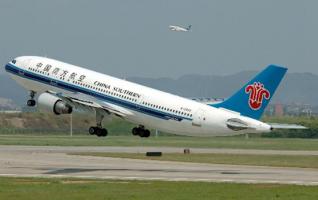
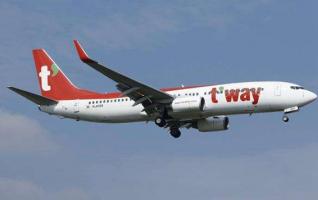
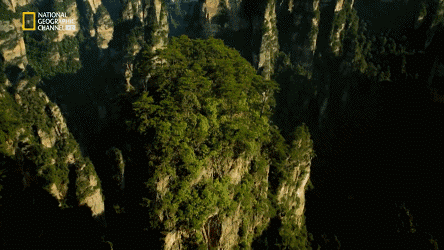
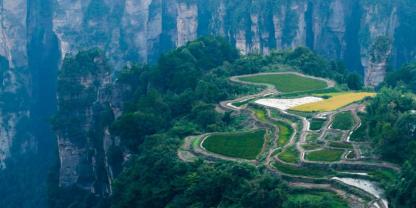
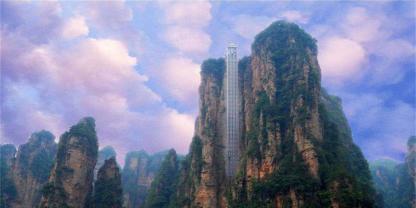
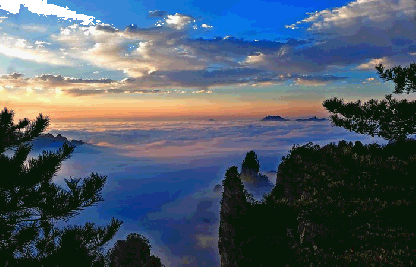
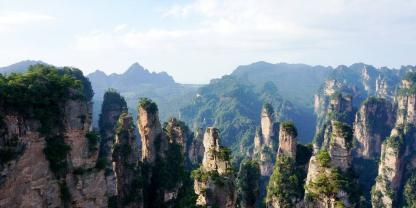


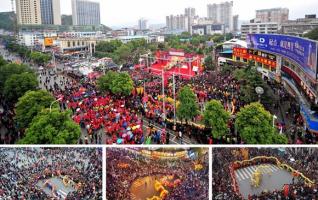
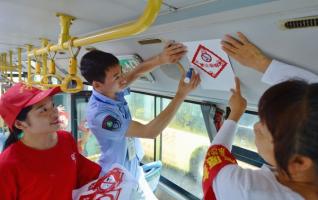
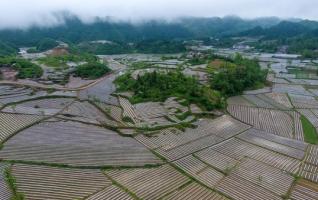
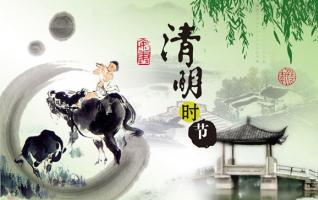
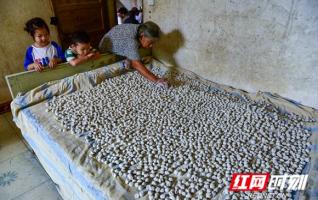
![Top food recommendation for Hunan tourism[Photo Gallery]](http://www.zjjbk.com/uploadfile/2017/0521/thumb_318_200_20170521042544645.jpg)
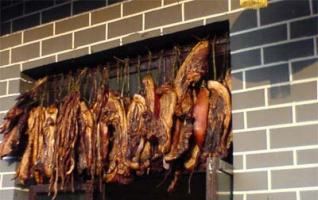
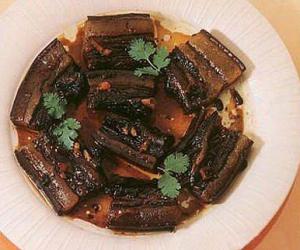
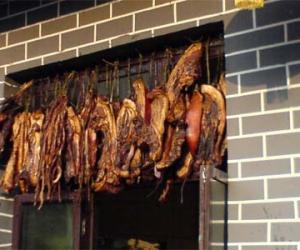
![Zhangjiajie old method of producing vegetable oil[Photo-step process]](http://www.zjjbk.com/uploadfile/2016/1220/thumb_318_200_20161220044619231.jpg)

